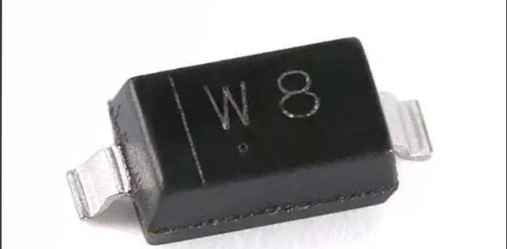Date:2025-04-29 Categories:Product knowledge Hits:350 From:Guangdong Youfeng Microelectronics Co., Ltd
In the realm of modern electronics, the Zener diode stands as a remarkable and indispensable semiconductor device. Its unique characteristics and functionality make it a key element in various electronic circuits, enabling critical operations such as voltage regulation, protection, and signal processing.
1. Structure and Basic Concept
A Zener diode is a specialized form of p - n junction diode. What sets it apart from ordinary diodes is its design for operation in the reverse - biased breakdown region. It features a heavily doped p - n junction, which results in a very thin depletion layer. This heavy doping is the fundamental factor that endows the Zener diode with its distinctive electrical properties.
2. Working Principle
2.1 Zener Breakdown Mechanism
When a reverse - bias voltage is applied to a Zener diode, initially, only a tiny leakage current flows. As the reverse - bias voltage gradually increases, it reaches a specific threshold known as the Zener voltage (
VZ
). At this point, the strong electric field across the thin depletion layer causes electrons to tunnel from the valence band of the p - type region to the conduction band of the n - type region. This process, called Zener breakdown, leads to a significant increase in the reverse - current. Unlike normal diodes, which may be damaged by excessive reverse - voltage, the Zener diode is engineered to operate stably in this breakdown region. In this region, despite large variations in the reverse - current, the voltage across the Zener diode remains approximately constant, which is the essence of its voltage - regulating ability.
2.2 Avalanche Breakdown (a related phenomenon)
In addition to Zener breakdown, avalanche breakdown can also occur in reverse - biased diodes. While Zener breakdown dominates in diodes with lower Zener voltages (usually below 5 - 6V), avalanche breakdown becomes more prominent at higher reverse - bias voltages. In avalanche breakdown, the high - energy electrons in the depletion layer gain sufficient kinetic energy from the applied electric field. These electrons then collide with semiconductor atoms, knocking out additional electrons and creating electron - hole pairs. These newly generated charge carriers can cause further collisions, leading to an avalanche - like multiplication of current. However, well - designed Zener diode can handle both breakdown mechanisms within their rated operating conditions without permanent damage.
3. Electrical Characteristics
3.1 Voltage - Current (V - I) Curve
The V - I characteristic curve of a Zener diode is a key indicator of its performance. In the forward - biased region, it behaves much like a regular diode, with a typical forward - voltage drop of about 0.6 - 0.7V for silicon - based Zener diode. As the forward - voltage increases, the forward - current rises rapidly. In the reverse - biased region, before reaching the Zener voltage, only a negligible leakage current exists. Once the Zener voltage is reached, the reverse - current increases sharply, and the voltage across the diode remains almost constant over a wide range of currents. This flat portion of the curve in the reverse - biased region is crucial for voltage - regulation applications.
Previous: Classification, Structure, and Principle of MOSFET
Next: Temperature Coefficient